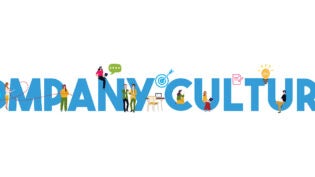
I like ideas that are easy to remember. That is one key reason why I often use memory hooks—something that helps me remember more complicated ideas. One memory hook that is always popular is the 3-legged stool. When one leg is weak, uneven—or worse, missing—the stool loses it ability to perform effectively.
The 3-legged stool is a great way to frame a discussion about the 3 essential measures of a high-performing organization. When evaluating whether your organization is performing at maximum efficiency, these 3 measures should be the basis of your scorecard;
- Employee Engagement
- Customer Loyalty
- Business Results
When you have Engaged Employees, they will create Loyal Customers, who will provide your organization with strong Business Results.
These 3 elements—or 3 legs of the stool—reflect the key measures of any high performing organization. If all 3 are strong, chances are that everyone—customers, employees, and shareholders—is happy.
You also can’t have weakness in one without weakness showing up in the other 3; if any leg of the stool is weak, the stool will be uneven or even fall down. If employees aren’t happy, they won’t do their best work for customers. If customers aren’t happy, business results will suffer. If the company’s performance isn’t positive, costs will have likely have to be cut, which in turns affects customers and employees.
So let’s have a look at each of the 3 legs in the high-performing organization stool.
Customer Loyalty
Many people talk about customer satisfaction versus customer loyalty. I think there is a significant difference. In truth who really wants mere satisfaction? It doesn’t inoculate your customers against competitive threats; at most it provides the opportunity for you to serve that customer one more time.
Customer loyalty is much stronger, based on an emotional relationship. When a customer is loyal to a company or product, they are far more resistant to the enticements of a competitor. Loyalty is based on an emotional connection, not simply filling a rational need.
For example, how often have you been satisfied, but had no compelling reason to return to that company versus another that offers a similar product or service?Now ask yourself what products or services you regularly use that you will walk by a competitor to get to, because you trust “your” company. That trust is what builds the emotional relationship. Loyalty comes when the bare minimum is exceeded and customers go from being merely satisfied to becoming loyal.
Customer loyalty is something that every organization should measure. It’s critical, because ultimately, customer loyalty drives business results. Customer loyalty is also a good measure how engaged your employees are.
Employee Engagement
Like we discussed with customer satisfaction, there is a big difference between employee satisfaction and employee engagement. Like customer satisfaction, employee satisfaction is also based on rational criteria—wages, hours, convenience to where I live, shifts, benefits, etc. While these are all important elements, like satisfied customers, satisfied employees are easily lured away by the enticements of another job. We are all familiar with the expression “the grass is greener on the other side.”
Satisfied employees simply fulfill their obligations—their job description—because their motivation is the rational elements of the job.
But employee engagement takes this one step further and moves into the emotional area. An engaged employee is willing to go the extra mile to ensure a customer has their expectations exceeded. Engaged employees deliver at a higher level of performance than satisfied employees because they have an emotional connection with the company. They have an emotional connection based on an alignment with their core values and those of the organization. They feel good about where they work, where the business is going, what that business stands for and how they do business.
An engaged employee doesn’t focus on money, because they are working for something more. So in addition to creating loyal customers, they have a stronger commitment to the organization. Recruiting, hiring, training, and if necessary, firing employees is an expensive process, so creating an internal culture that has engaged employees is also a smart business strategy.
Business Results
Business results are the ultimate outcome. If you set your goal to develop engaged employees who create loyal customers, then your organization will be resistant to competitive pressures and deliver stronger business results, more efficiently.
That’s how the 3-legged stool relates to the essential measures of a high-performing organization. With engaged employees recruiting, hiring and training costs are lower. With loyal customers you don’t have to replace them with expensive “new” customers. And when you have engaged employees serving loyal customers you will have stronger business performance.
It’s also a great way to create a scorecard to evaluate the overall success of your business. Managers or departments who have high ratings in these 3 critical areas will outperform those that are weak in one or more areas. Only measuring business results doesn’t give you a clear picture of what is impacting your overall business results.
This article was originally published by Bill Hogg












